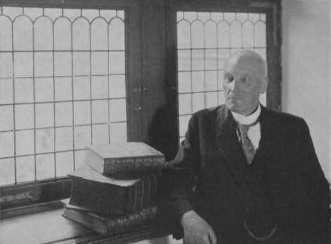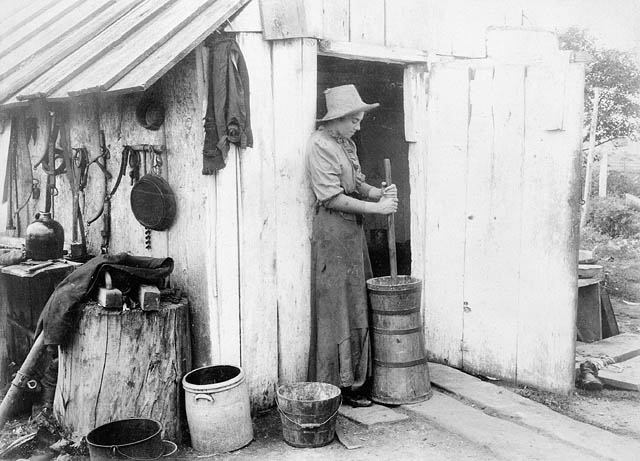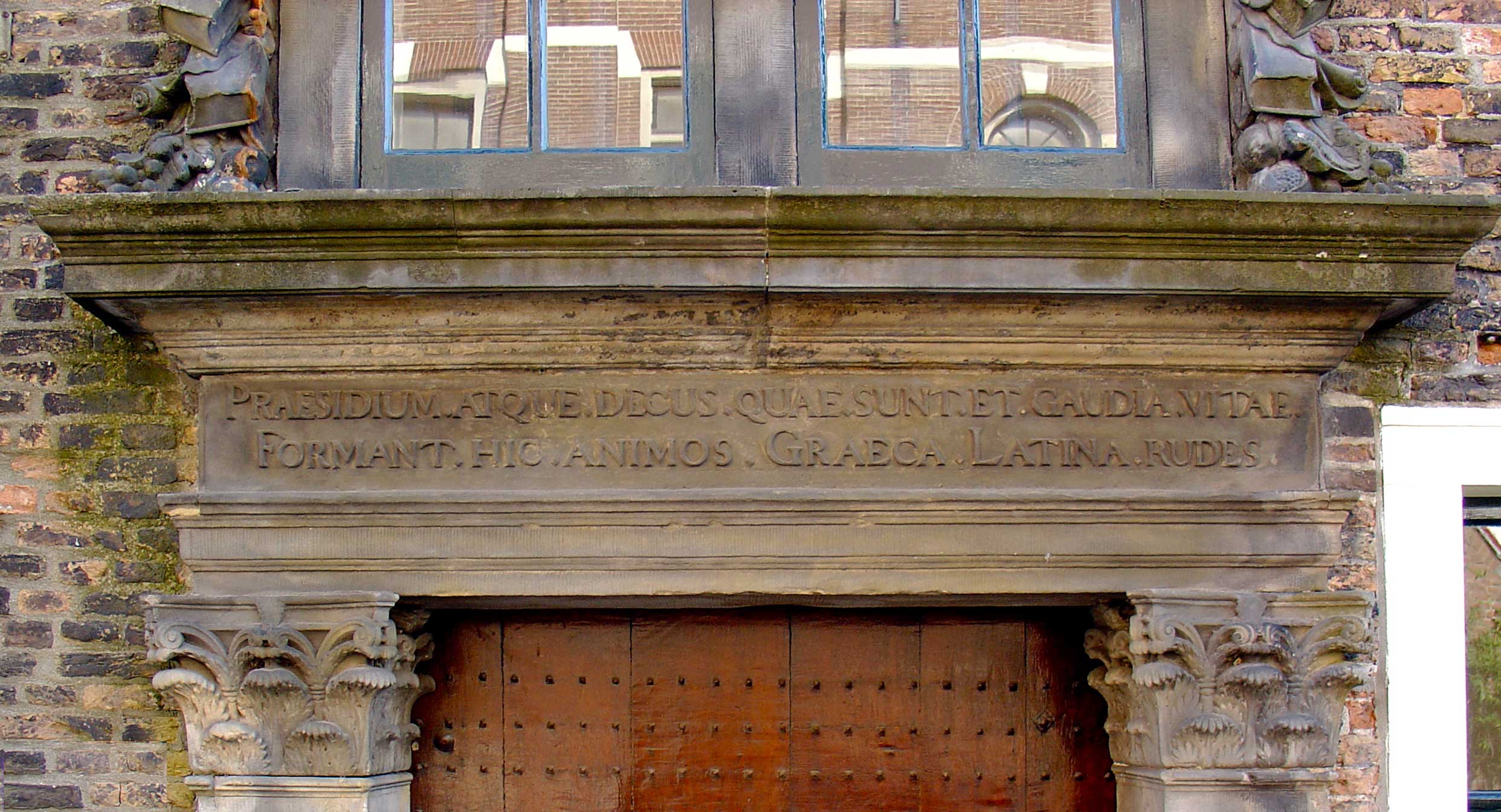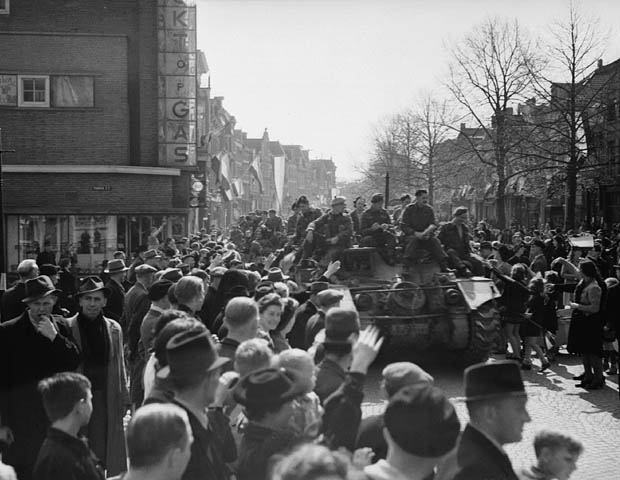|
Tsjalling Hiddes Halbertsma
Tsjalling Hiddes Halbertsma ( West Frisian form: Tsjalling Hiddes Halbertsma, pron. ʧÉlɪŠËhɪdÉs ËhÉlbÇtsma(the r is silent); Dutch form: Tjalling Hiddes Halbertsma, pron. calɪŠËɦɪdÉs ËɦalbÇrtsma (Grou, 21 January 1792 â there, 12 December 1852),Breuker 1993, p. 591.Breuker 2016, p. 1128. was a Dutch Frisian writer, poet and merchant,Jensma, p. 197. and the least well-known of the three Brothers Halbertsma.Breuker 1993, p. 587. During his life he won a certain amount of fame in and around Grou, for the poems and short stories he wrote, and also because of his success as a businessman. After his death some of his literary works were collected with those of his brothers Justus and EeltsjeWiersma, p. 9. to be published in 1871 as the famous ''Rimen en Teltsjes''.Breuker 1993, pp. 603â606. It was only from 1918 onwards that more of Tsjalling Halbertsma's works were added to this collection.Breuker 1993, p. 609. Life Youth and background Tsjalling Hiddes ... [...More Info...] [...Related Items...] OR: [Wikipedia] [Google] [Baidu] |
Grou
Grou ( nl, Grouw) is a town in the province Friesland of the Netherlands and had around 5655 citizens in January 2017. Since 2014 Grou is part of the municipality of Leeuwarden. The town is located on the lake and the . Heineken operated a distribution centre for Friesland in Grou for 25 years until 2004. It used to be the capital of the municipality of before the reorganization of municipalities in 1984, and capital of the municipality of Boarnsterhim until 2014. While the rest of the Netherlands celebrates Sinterklaas (Saint Nicholas) on December 5, Grou instead celebrates a unique local variation of this children's holiday known as on February 21. In local lore Sint Piter is a distinct character separate from Saint Nicholas, and was historically known as the patron saint for local fishermen. A nickname for the town is Tsiisferdûnsers, meaning cheese dancers, from a story where a fiddler was paid with cheese at a village dance. Transport The town is located at an exit o ... [...More Info...] [...Related Items...] OR: [Wikipedia] [Google] [Baidu] |
Geart Aeilco Wumkes
Geart Aeilco Wumkes or G.A. Wumkies (4 September 1869, Joure â 7 May 1954, Huizum) was a Protestant West Frisian language Bible translator, historian, and preacher of the Dutch Reformed Church. Major work His major work was the translation of the Bible into West Frisian, with the New Testament (West Frisian: ''Nije Testamint'') being published in 1933 and the Old Testament (West Frisian: ''Alde Testamint'') in 1943. The Old Testament was completed with the help of E. B. Folkertsma. The complete Bible (West Frisian: ''Bibel'') was published in 1943. Other translations In 1953 he translated John Bunyan's ''The Pilgrim's Progress ''The Pilgrim's Progress from This World, to That Which Is to Come'' is a 1678 Christian allegory written by John Bunyan. It is regarded as one of the most significant works of theological fiction in English literature and a progenitor of ...'' into West Frisian: ''De Pylgerreize''. External linksWumkes.nl mei ûnder oaren de Stads- en Dor ... [...More Info...] [...Related Items...] OR: [Wikipedia] [Google] [Baidu] |
Sneek
Sneek (; fy, Snits) is a city southwest of Leeuwarden and the seat of the former municipality of Sneek in the province of Friesland, Netherlands. As of 2011 it is the seat of the municipality of Súdwest-Fryslân (Southwest Friesland). The city had approximately 33,855 inhabitants in January 2017. Sneek is situated in Southwest Friesland, close to the Sneekermeer, and is well known for its canals, the Waterpoort (''Watergate'', the symbol of the city), and watersports (hosting the annual Sneekweek, the largest sailing event on inland European waterways). Sneek is one of the '' Friese elf steden'' ("Eleven cities of Friesland"). The city is very important in the southwestern part of Friesland (called the Zuidwesthoek, or ''Southwest Corner''). History History Sneek was founded in the 10th century as ''Chud'' on a sandy peninsula at the crossing site of a dike with an important waterway (called the ''Magna Fossa'' in old documents). This waterway was dug when ... [...More Info...] [...Related Items...] OR: [Wikipedia] [Google] [Baidu] |
Woudsend
Woudsend ( fry, Wâldsein) is a village in Súdwest-Fryslân in the province of Friesland, the Netherlands. It had a population of around 1,380 in January 2017. There are two windmills in the village, 't Lam and De Jager. History The village was first mentioned in 1337 as Woldesende, and means "end (edge) of the wood". Woudsend is a village from the Middle Ages that developed along the river. The economy was mainly based on trade and shipping. The village was densely settled and is characterised by many narrow alleys. The Dutch Reformed church was built in 1660 as a replacement of the medieval church. The new church was not well founded and started to subside. In 1835, it was decided to build a new church on the other side of the village. The church was completed in 1837. The Catholic St Michael Church was built in 1792 as a clandestine church behind a residential house. In 1933, a tower was added and the church was enlarged. In 1722, a clandestine Mennonite church was b ... [...More Info...] [...Related Items...] OR: [Wikipedia] [Google] [Baidu] |
Harlingen, Netherlands
Harlingen (; fy, Harns ) is a Municipalities of the Netherlands, municipality and a city in the northern Netherlands, in the province of Friesland on the coast of Wadden Sea. Harlingen is a town with a long history of fishing and shipping that received City rights in the Netherlands, city rights in 1234. Overview Harlingen is served by two stations on the railway line from Leeuwarden. From 1904 to 1935 there was a passenger service on the North Friesland Railway, freight being carried until January 1938. Rederij Doeksen operate ferries to the West Frisian Islands, Wadden islands of Vlieland and Terschelling that depart from Harlingen. The famous Dutch writer Simon Vestdijk was born in Harlingen and used to depict his hometown in his writings as Lahringen. The town of Harlingen, Texas, in the United States is named after this city because many of the original settlers of the Texas town came from Harlingen. The Admiralty of Friesland was established in Dokkum in 1597 but move ... [...More Info...] [...Related Items...] OR: [Wikipedia] [Google] [Baidu] |
Dairy Product
Dairy products or milk products, also known as lacticinia, are food products made from (or containing) milk. The most common dairy animals are cow, water buffalo, nanny goat, and ewe. Dairy products include common grocery store food items in the Western world such as yogurt, cheese and butter. A facility that produces dairy products is known as a ''dairy''. Dairy products are consumed worldwide to varying degrees (see consumption patterns worldwide). Some people avoid some or all dairy products either because of lactose intolerance, veganism, or other health reasons or beliefs. Production relationship graph Types of dairy product Milk Milk is produced after optional homogenization or pasteurization, in several grades after standardization of the fat level, and possible addition of the bacteria '' Streptococcus lactis'' and ''Leuconostoc citrovorum''. Milk can be broken down into several different categories based on type of product produced, including cream, butt ... [...More Info...] [...Related Items...] OR: [Wikipedia] [Google] [Baidu] |
Farmstead
A homestead is an isolated dwelling, especially a farmhouse, and adjacent outbuildings, typically on a large agricultural holding such as a ranch or station. In North America the word "homestead" historically referred to land claimed by a settler or squatter under the Homestead Acts (USA) or Dominion Lands Act (Canada). In Old English the term was used to mean a human settlement, and in Southern Africa the term is used for a cluster of several houses normally occupied by a single extended family. In Australia it refers to the owner's house and the associated outbuildings of a pastoral property, known as a station. See also * Homestead principle * Homesteading * List of homesteads in Western Australia * List of historic homesteads in Australia * Settlement hierarchy A settlement hierarchy is a way of arranging settlements into a hierarchy based upon their population or some other criteria. The term is used by landscape historians and in the National Curriculum for Engla ... [...More Info...] [...Related Items...] OR: [Wikipedia] [Google] [Baidu] |
Cheese-making
Cheesemaking (or caseiculture) is the craft of making cheese. The production of cheese, like many other food preservation processes, allows the nutritional and economic value of a food material, in this case milk, to be preserved in concentrated form. Cheesemaking allows the production of the cheese with diverse flavors and consistencies. History Cheesemaking is documented in Egyptian tomb drawings and in ancient Greek literature. Cheesemaking may have originated from nomadic herdsmen who stored milk in vessels made from sheep's and goats' stomachs. Because their stomach linings contains a mix of lactic acid, bacteria as milk contaminants and rennet, the milk would ferment and coagulate.Kats, Sandor Ellix; Pollan, Michael (2015). The Art of Fermentation an In-depth Exploration of Essential Concepts and Processes from around the World. Vermont: Chelsea Green Publishing. A product reminiscent of yogurt would have been produced, which through gentle agitation and the separation ... [...More Info...] [...Related Items...] OR: [Wikipedia] [Google] [Baidu] |
Churning (butter)
Churning is the process of shaking up cream or whole milk to make butter, usually using a butter churn. In Europe from the Middle Ages until the Industrial Revolution, a churn was usually as simple as a barrel with a plunger in it, moved by hand. These have mostly been replaced by mechanical churns. Butter is essentially the fat of milk. It is usually made from sweet cream (that is, cream skimmed from milk rather than whey). In the USA, Ireland, the UK and the Nordic countries, salt is usually added to it. Unsalted (sweet) butters are most commonly used in the rest of Europe. However, it can also be made from acidulated or bacteriologically soured cream. Well into the 19th century butter was still made from cream that had been allowed to stand and sour naturally. The cream was then skimmed from the top of the milk and poured into a wooden tub. Buttermaking was done by hand in butter churns. The natural souring process is, however, a very sensitive one and infection by foreign m ... [...More Info...] [...Related Items...] OR: [Wikipedia] [Google] [Baidu] |
Latin School
The Latin school was the grammar school of 14th- to 19th-century Europe, though the latter term was much more common in England. Emphasis was placed, as the name indicates, on learning to use Latin. The education given at Latin schools gave great emphasis to the complicated grammar of the Latin language, initially in its Medieval Latin form. Grammar was the most basic part of the trivium and the Liberal arts â in artistic personifications Grammar's attribute was the birch rod. Latin school prepared students for university, as well as enabling those of middle class status to rise above their station. It was therefore not unusual for children of commoners to attend Latin schools, especially if they were expected to pursue a career within the church.Wiesner-Hanks, p122. Although Latin schools existed in many parts of Europe in the 14th century and were more open to the laity, prior to that the Church allowed for Latin schools for the sole purpose of training those who would one d ... [...More Info...] [...Related Items...] OR: [Wikipedia] [Google] [Baidu] |
Leeuwarden
Leeuwarden (; fy, Ljouwert, longname=yes /; Town Frisian: ''Liwwadden''; Leeuwarder dialect: ''Leewarden'') is a city and municipality in Friesland, Netherlands, with a population of 123,107 (2019). It is the provincial capital and seat of the Provincial Council of Friesland. It is located about 50 km west of Groningen and 110 km north east from the Dutch capital Amsterdam (as the crow flies). The region has been continuously inhabited since the 10th century. It came to be known as Leeuwarden in the early 9th century AD and was granted city privileges in 1435. It is the main economic hub of Friesland, situated in a green and water-rich environment. Leeuwarden is a former royal residence and has a historic city centre, many historically relevant buildings, and a large shopping centre with squares and restaurants. Leeuwarden was awarded the title European Capital of Culture for 2018. The Elfstedentocht (Eleven Cities Tour), an ice skating tour passing the eleven cities of Fri ... [...More Info...] [...Related Items...] OR: [Wikipedia] [Google] [Baidu] |







